Tropical Brittania: British Colonial Style

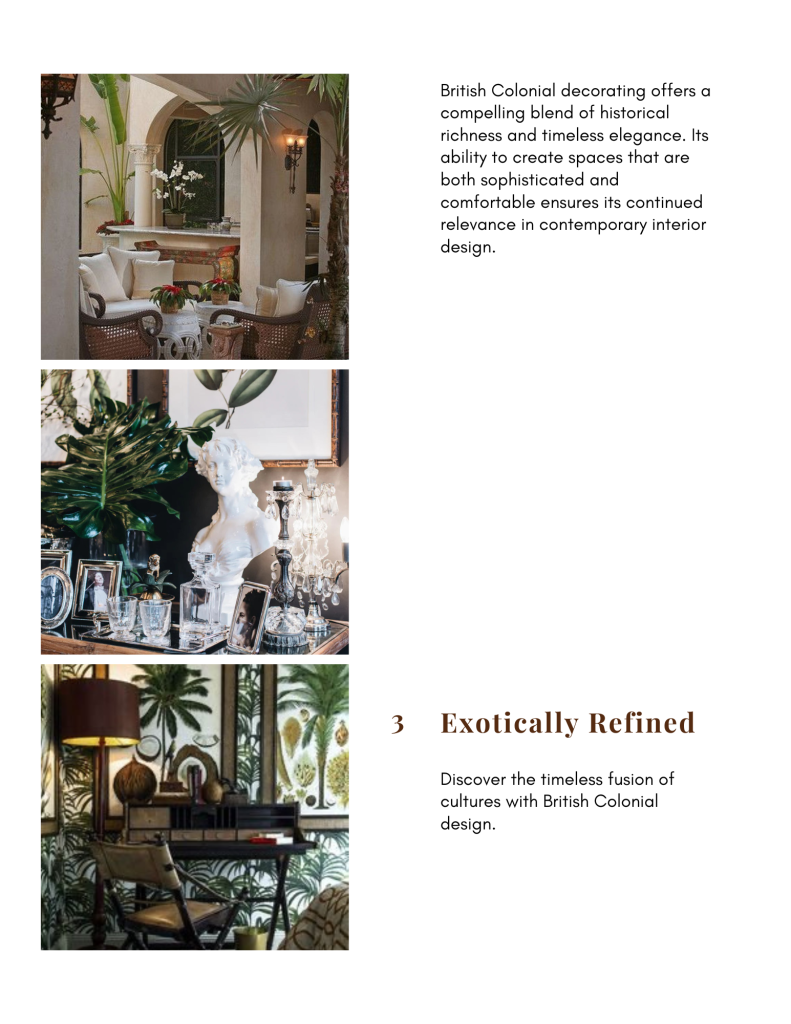

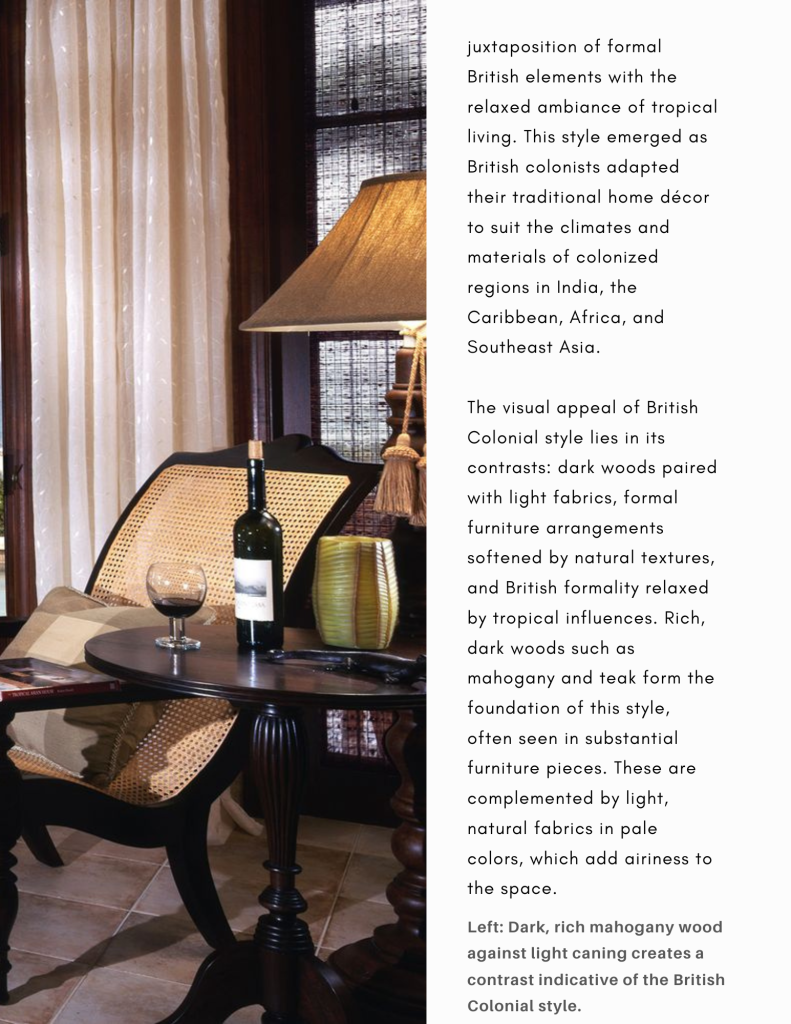
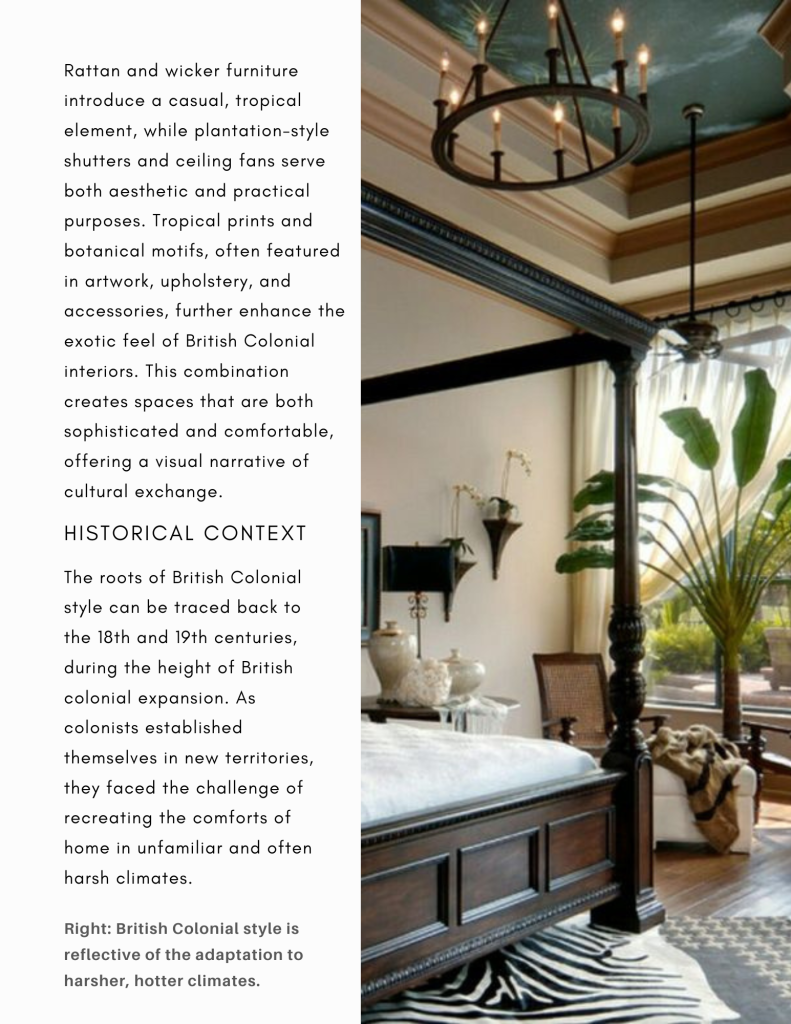
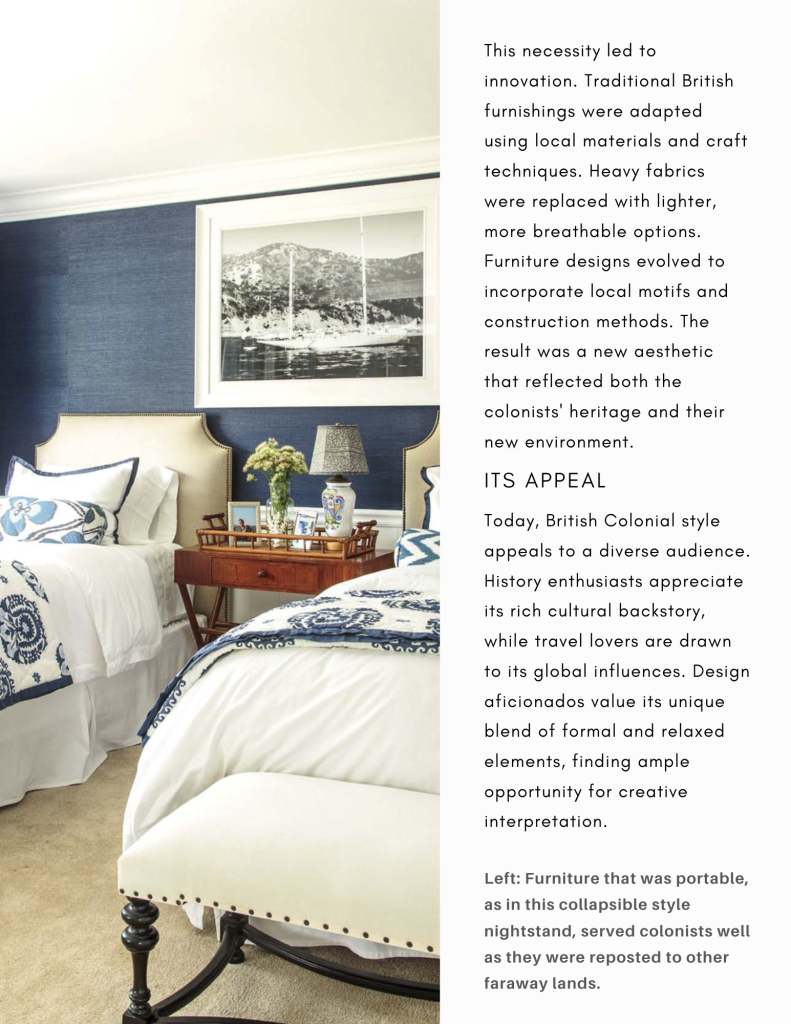
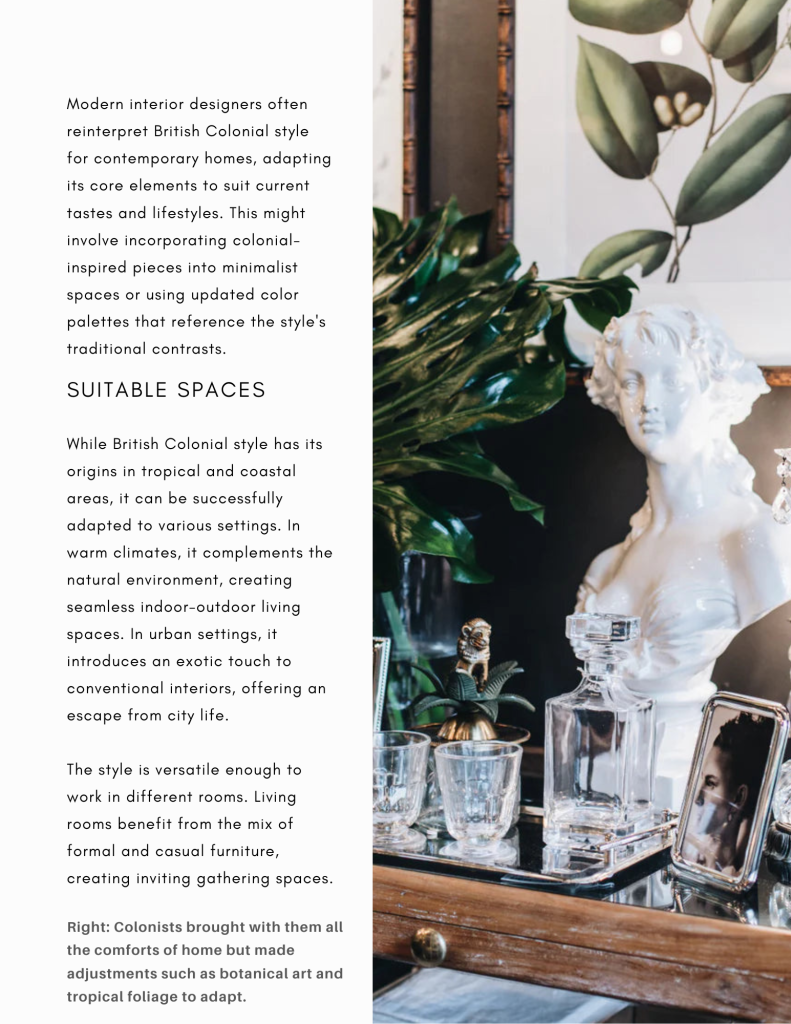
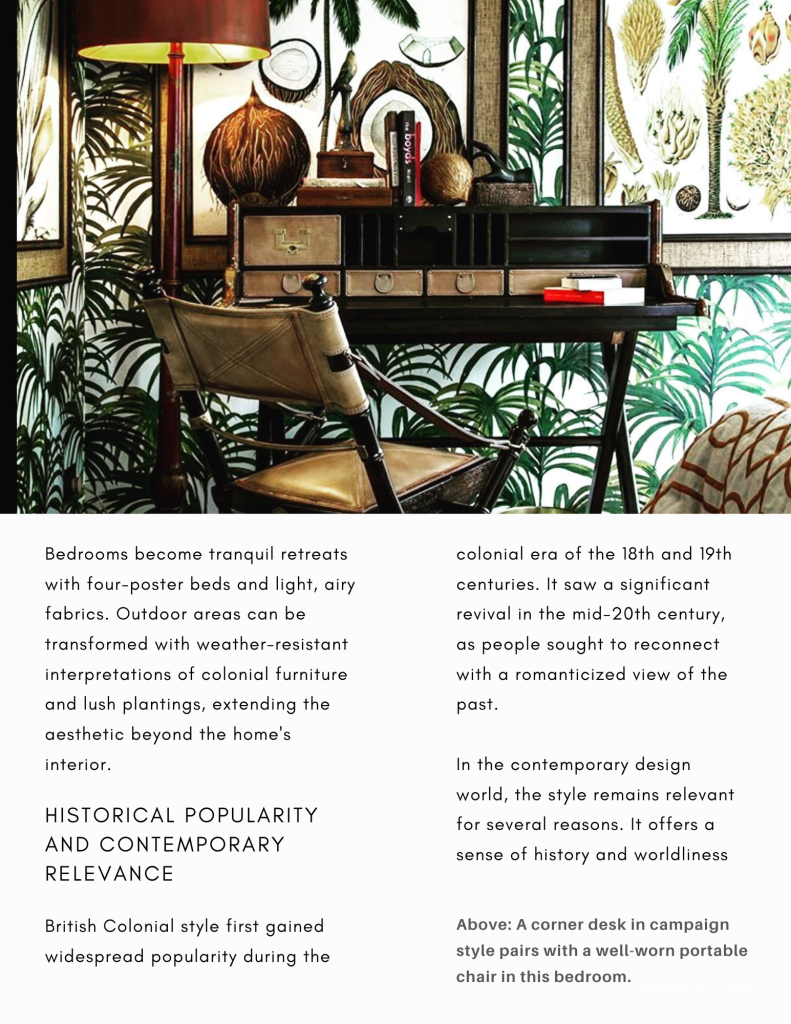
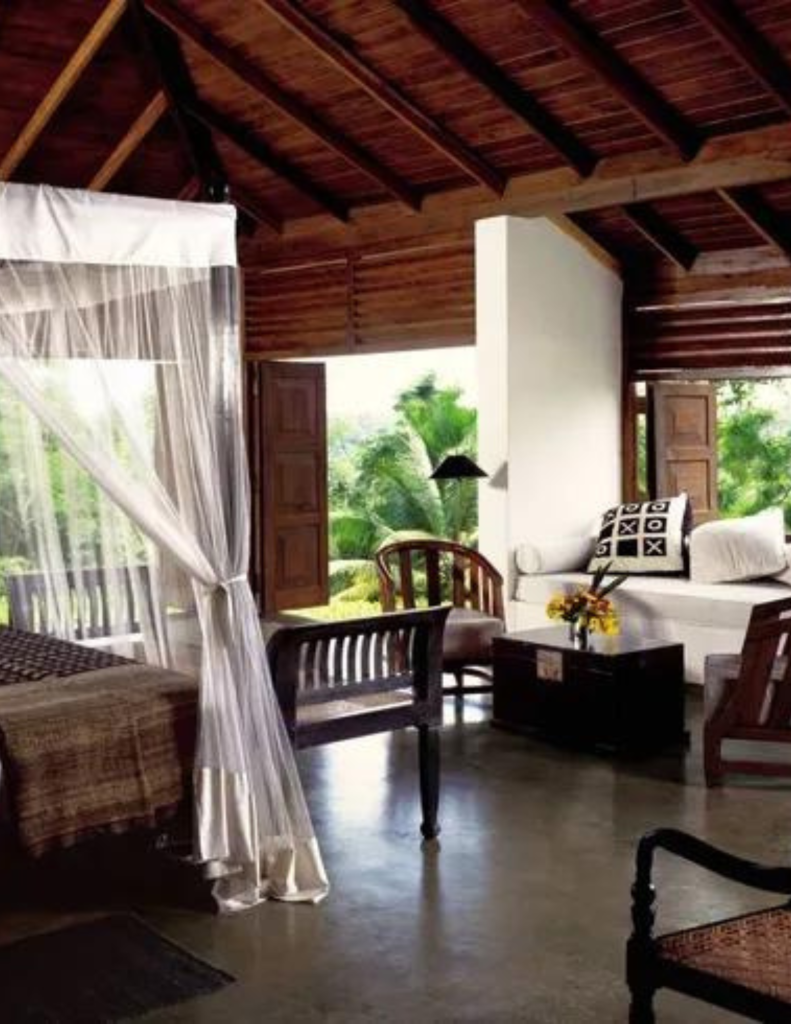
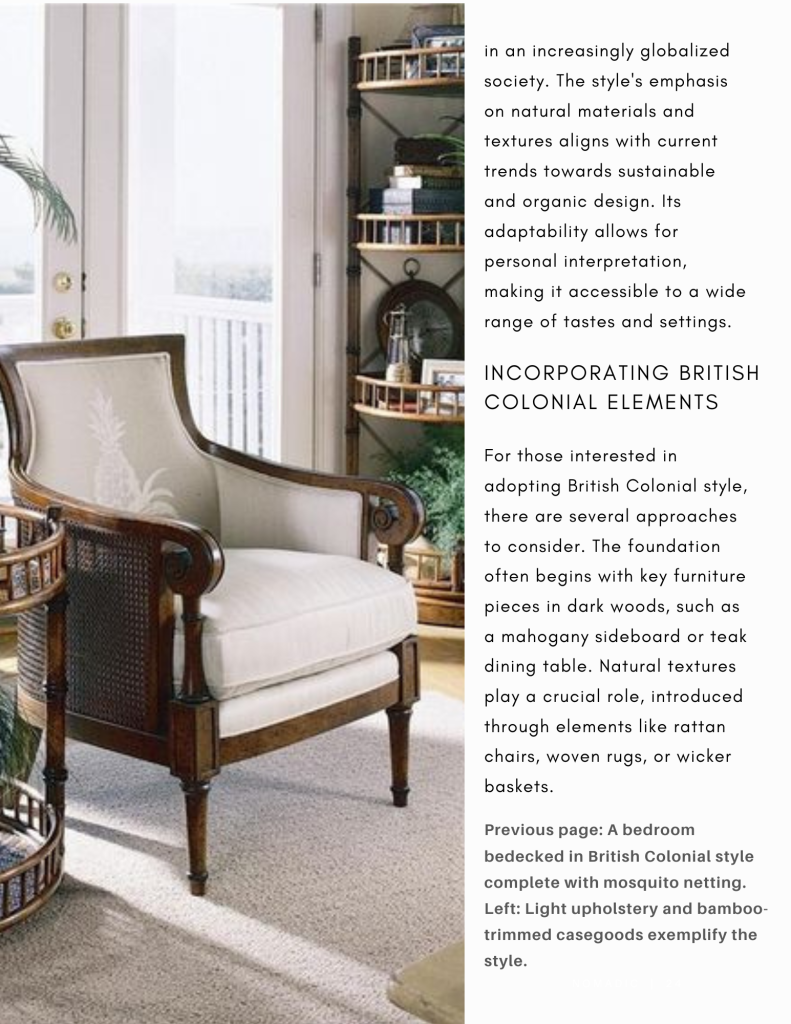
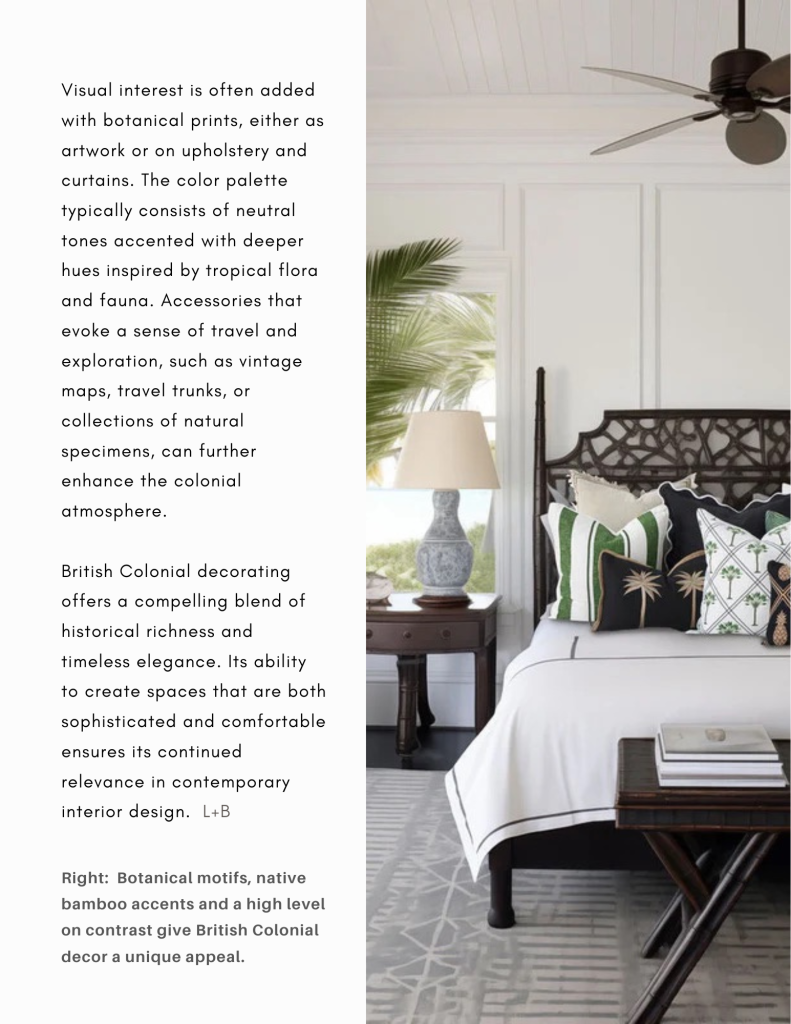
Complete Article Text:
Understanding British Colonial Decorating: A Timeless Fusion of Cultures
The Allure of a Global Aesthetic
British Colonial decorating stands as a testament to the enduring appeal of cultural fusion in interior design. This style, born from the intermingling of British traditions and tropical influences, offers a unique blend of elegance and comfort. Its timeless charm continues to captivate homeowners and designers alike, providing a sophisticated yet inviting atmosphere that transcends fleeting trends.
At its core, British Colonial decorating is characterized by the harmonious juxtaposition of formal British elements with the relaxed ambiance of tropical living. This style emerged as British colonists adapted their traditional home décor to suit the climates and materials of colonized regions in India, the Caribbean, Africa, and Southeast Asia.
The visual appeal of British Colonial style lies in its contrasts: dark woods paired with light fabrics, formal furniture arrangements softened by natural textures, and British formality relaxed by tropical influences. Rich, dark woods such as mahogany and teak form the foundation of this style, often seen in substantial furniture pieces. These are complemented by light, natural fabrics in pale colors, which add airiness to the space.
Rattan and wicker furniture introduce a casual, tropical element, while plantation-style shutters and ceiling fans serve both aesthetic and practical purposes. Tropical prints and botanical motifs, often featured in artwork, upholstery, and accessories, further enhance the exotic feel of British Colonial interiors. This combination creates spaces that are both sophisticated and comfortable, offering a visual narrative of cultural exchange.
Historical Context
The roots of British Colonial style can be traced back to the 18th and 19th centuries, during the height of British colonial expansion. As colonists established themselves in new territories, they faced the challenge of recreating the comforts of home in unfamiliar and often harsh climates.
This necessity led to innovation. Traditional British furnishings were adapted using local materials and craft techniques. Heavy fabrics were replaced with lighter, more breathable options. Furniture designs evolved to incorporate local motifs and construction methods. The result was a new aesthetic that reflected both the colonists’ heritage and their new environment.
Its Appeal
Today, British Colonial style appeals to a diverse audience. History enthusiasts appreciate its rich cultural backstory, while travel lovers are drawn to its global influences. Design aficionados value its unique blend of formal and relaxed elements, finding ample opportunity for creative interpretation.
Modern interior designers often reinterpret British Colonial style for contemporary homes, adapting its core elements to suit current tastes and lifestyles. This might involve incorporating colonial-inspired pieces into minimalist spaces or using updated color palettes that reference the style’s traditional contrasts.
Suitable Spaces
While British Colonial style has its origins in tropical and coastal areas, it can be successfully adapted to various settings. In warm climates, it complements the natural environment, creating seamless indoor-outdoor living spaces. In urban settings, it introduces an exotic touch to conventional interiors, offering an escape from city life.
The style is versatile enough to work in different rooms. Living rooms benefit from the mix of formal and casual furniture, creating inviting gathering spaces. Bedrooms become tranquil retreats with four-poster beds and light, airy fabrics. Outdoor areas can be transformed with weather-resistant interpretations of colonial furniture and lush plantings, extending the aesthetic beyond the home’s interior.
Historical Popularity and Contemporary Relevance
British Colonial style first gained widespread popularity during the colonial era of the 18th and 19th centuries. It saw a significant revival in the mid-20th century, as people sought to reconnect with a romanticized view of the past.
In the contemporary design world, the style remains relevant for several reasons. It offers a sense of history and worldliness in an increasingly globalized society. The style’s emphasis on natural materials and textures aligns with current trends towards sustainable and organic design. Its adaptability allows for personal interpretation, making it accessible to a wide range of tastes and settings.
Incorporating British Colonial Elements
For those interested in adopting British Colonial style, there are several approaches to consider. The foundation often begins with key furniture pieces in dark woods, such as a mahogany sideboard or teak dining table. Natural textures play a crucial role, introduced through elements like rattan chairs, woven rugs, or wicker baskets.
Visual interest is often added with botanical prints, either as artwork or on upholstery and curtains. The color palette typically consists of neutral tones accented with deeper hues inspired by tropical flora and fauna. Accessories that evoke a sense of travel and exploration, such as vintage maps, travel trunks, or collections of natural specimens, can further enhance the colonial atmosphere.
British Colonial decorating offers a compelling blend of historical richness and timeless elegance. Its ability to create spaces that are both sophisticated and comfortable ensures its continued relevance in contemporary interior design. By understanding and thoughtfully incorporating elements of this style, homeowners and designers can create environments that tell a story of cultural exchange and global influences, all while providing a beautiful and functional living space.
